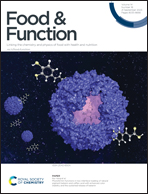Bromelain: a review of its mechanisms, pharmacological effects and potential applications
Abstract
The utilization of plant-derived supplements for disease prevention and treatment has long been recognized because of their remarkable potential. Ananas comosus, commonly known as pineapple, produces a group of enzymes called bromelain, which contains sulfhydryl moieties. Recent studies have shown that bromelain exhibits a wide range of activities, including anti-inflammatory, anti-diabetic, anti-cancer, and anti-rheumatic properties. These properties make bromelain a promising drug candidate for the treatment of various diseases. The anti-inflammatory activity of bromelain has been shown to be useful in treating inflammatory conditions such as osteoarthritis, rheumatoid arthritis, and asthma, whereas the anti-cancer activity of bromelain is via induction of apoptosis, inhibition of angiogenesis, and enhancement of the body's immune response. The anti-diabetic property of bromelain is owing to the improvement in glucose metabolism and reduction in insulin resistance. The therapeutic potential of bromelain has been investigated in numerous preclinical and clinical studies and a number of patents have been granted to date. Various formulations and delivery systems are being developed in order to improve the efficacy and safety of this molecule, including the microencapsulated form to treat oral inflammatory conditions and liposomal formulations to treat cancer. The development of novel drug delivery systems and formulations has further ameliorated the therapeutic potential of bromelain by improving its bioavailability and stability, while reducing the side effects. This review intends to discuss various properties and therapeutic applications of bromelain, along with its possible mechanism of action in treating various diseases. Recent patents and clinical trials concerning bromelain have also been covered.

- This article is part of the themed collection: Food & Function Review Articles 2023


 Please wait while we load your content...
Please wait while we load your content...